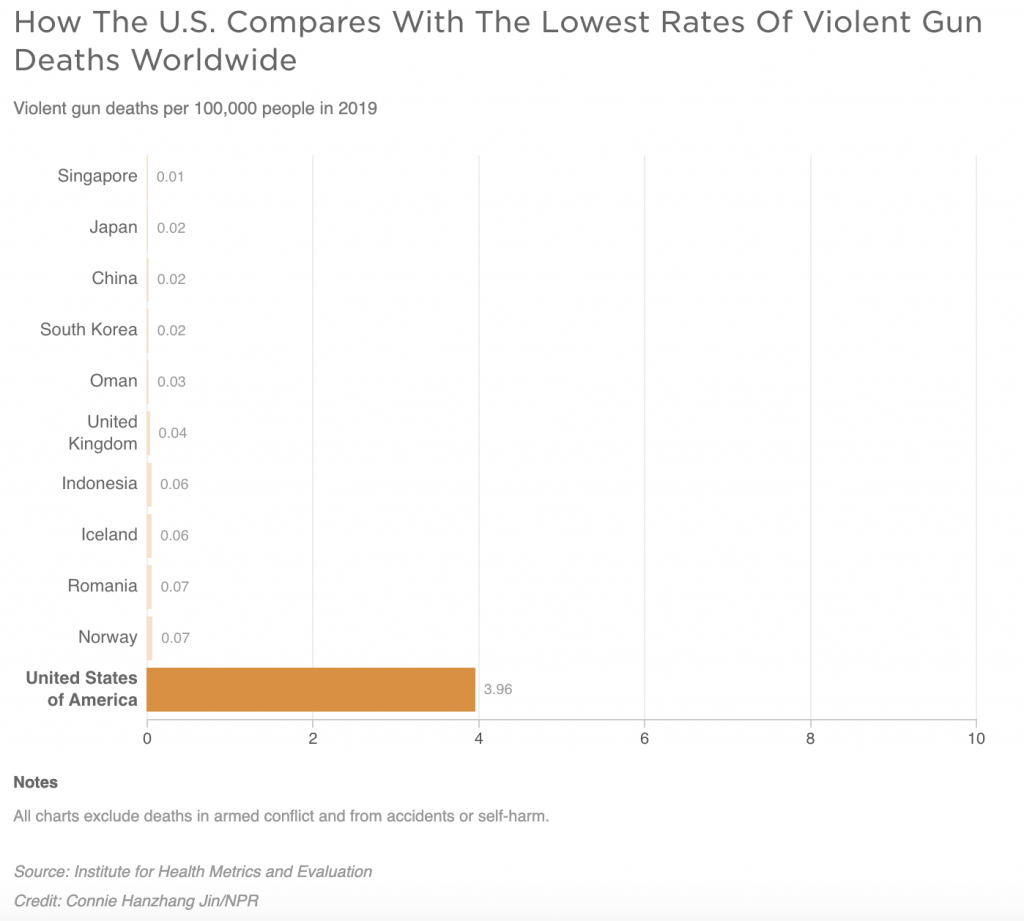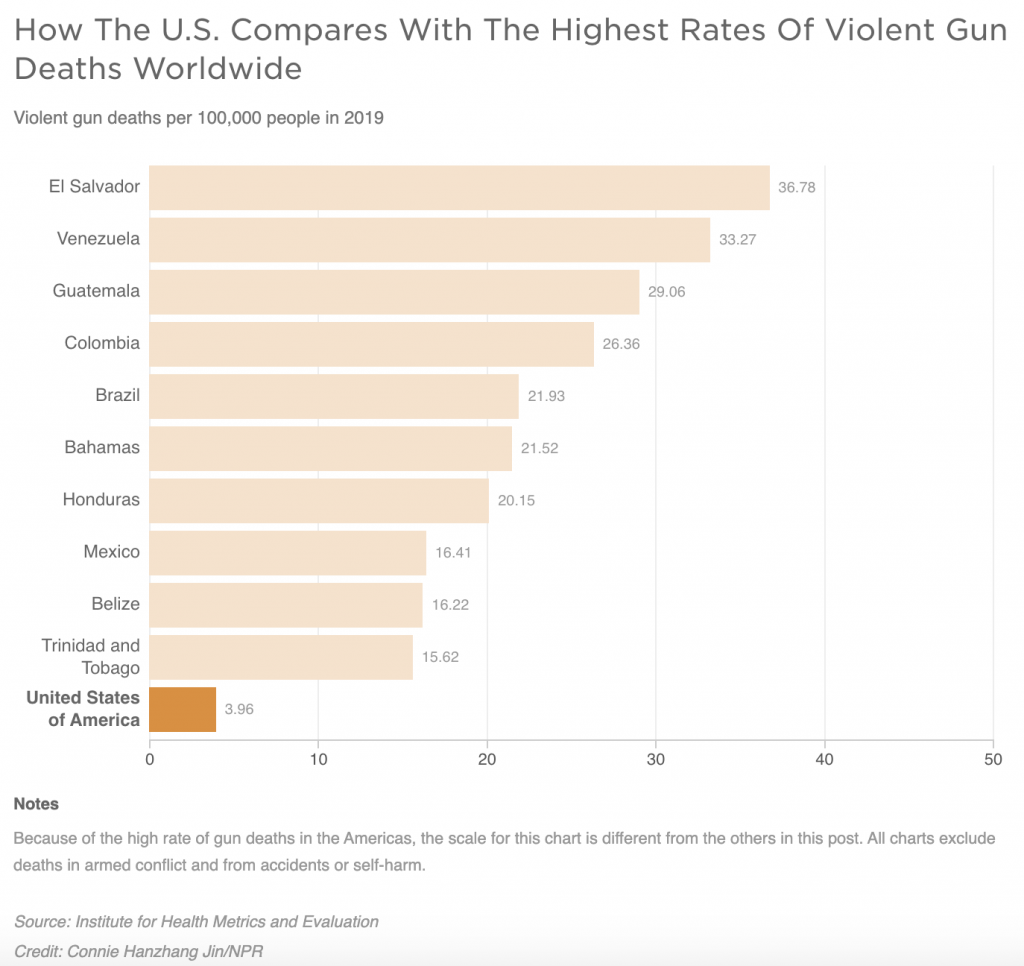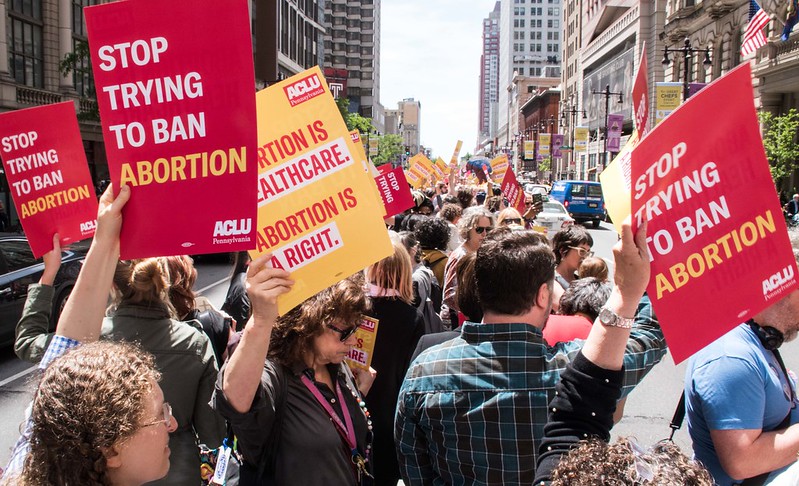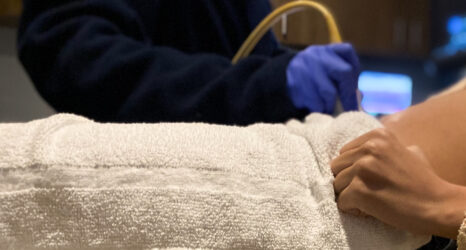For The Weekly Pulse (a revisit of an old Ms. column!), we’ve scoured the most trusted journalistic sources—and, of course, our Twitter feeds—to bring you this week’s most important news stories related to health and wellness.
In this week’s edition: we take a look at at gun violence as a public health crisis; run down the current state of reproductive health and rights (including the EACH Act); and provide the latest news on the pandemic.
Gun Violence Is a “Public Health Crisis”

Following the devastating mass shooting events that occurred in Atlanta and Boulder, the spotlight is once again focusing on how frequently the American people suffer from gun violence.
+ Dick Durbin (D-Ill.) referred to U.S. gun violence as “a public health crisis” when opening Tuesday’s Senate Judiciary Committee hearing.
“Prayer leaders have their important place in this, but we are Senate leaders. What are we doing?” asked Durbin, the committee’s chairman. “We won’t solve this crisis with prosecutions after funerals. We need prevention before shooting.”

+ The American Public Health Association (APHA) has also formally declared gun violence a public health crisis, reporting that guns have the potential to “greatly amplify” violence, inflict serious injury, and are a leading cause of premature death.
The APHA reports that more than 39,000 people in the United States die annually as a result of gun violence. Tens of thousands more suffer non-fatal gun injuries.
+ U.S. gun violence is far more frequent than other wealthy, high-population countries, according to data from The University of Washington’s Institute for Health Metrics and Evaluation. NPR reports:
“The U.S. has the 32nd-highest rate of deaths from gun violence in the world: 3.96 deaths per 100,000 people in 2019. That was more than eight times as high as the rate in Canada, which had 0.47 deaths per 100,000 people—and nearly 100 times higher than in the United Kingdom, which had 0.04 deaths per 100,000.
On a state-by-state calculation, the rates can be even higher. In the District of Columbia, the rate is 18.5 per 100,000— he highest in the United States. The second-highest is in Louisiana: 9.34 per 100,000. In Georgia and Colorado—the scenes of the two most recent mass shootings—the rates are a bit closer to the national average: 5.62 per 100,000 in Georgia and 2.27 in Colorado.”

Repro Rundown

+ On Thursday, legislation was introduced that would reverse the Hyde Amendment and guarantee abortion coverage in federal health insurance programs.
The Equal Access to Abortion Coverage in Health Insurance Act of 2021 (the EACH Act) was introduced by Representatives Barbara Lee (D-Calif.), Ayanna Pressley (D-Mass.), Diana DeGette (D-Colo.), Jan Schakowsky (D-Ill.), and Senators Tammy Duckworth (D-Ill.), Mazie Hirono (D-Hawaii) and Patty Murray (D-Wash.), along with 127 co-sponsors in the House and 22 in the Senate.
+ The American Recovery Act has “a little-noticed provision” that could increase access to postpartum health care and help the pregnancy-related death crisis. States will now be able to decide whether or not to extend Medicaid eligibility so that people who have given birth have health insurance covered for a full year after.
“We know that the entire year after birth is a period where women have higher risk of experiencing complications related to their pregnancy and also related to chronic conditions that may have been preexisting or emerged during pregnancy,” said Jamie Daw, an assistant professor of health policy and management at Columbia University’s Mailman School of Public Health. “If we are able to catch early warning signs, we could be preventing death.”
+ Legislation that would ban abortions after a fetal heartbeat is detected has been introduced in the Idaho Senate.
The bill makes it a felony to perform an abortion once a heartbeat is detected. There are exceptions if a woman’s life is in danger or if the pregnancy is a result of rape or incest. However, the exceptions do not make this legislation in any way “better” because any legislation that limits a person’s right to have an abortion is bad legislation.
+ A proposed Kentucky amendment aims to say there is “no right” to an abortion in the state’s constitution. The bill is expected to pass with no issue, but would need the approval of Kentuckians on the ballot.
+ The Center for American Progress released “A Proactive Abortion Agenda” that features proposed federal and state policies to both protect and expand access to abortion care. They include:
- The right to abortion should be codified into law.
- Lawyers with pro-abortion rights records should be selected for the bench.
- No government should be able to interfere with the right to abortion.
- Abortion must be affordable for all.
- People need access to the full range of options for abortion care—delivered in person, via telemedicine, or self-managed.
- Expand the workforce of abortion providers trained in culturally competent care.
- Patient and provider safety must be a priority.
- Abortion must be supported and integrated within the full scope of reproductive health care services.
+ A new bill introduced in the Nevada Senate Committee on Commerce and Labor would allow menstruating people to receive birth control at a pharmacy, bypassing the need for a doctor’s visit.
“It is so essential that we open up access for [people] to get what we know to be safe forms of birth control,” Cannizzaro said during the bill hearing. “Whether it be to finish our education, attain a career goal, or simply to wait to have a family for when we are ready, birth control empowers [people] to make decisions that are right for our own bodies.”
Soon, All Adults Will Be COVID-19 Vaccine Eligible
+ Keeping with President Biden’s directive for states to make all adults vaccine-eligible by May 1, some of the most populous states are set to expand eligibility as soon as April 1. California residents who are age 50 or older will be eligible for the coronavirus vaccine on April 1, and all residents who are age 16 or older will be made eligible on April 15. In Florida, residents age 40 or older will be eligible on March 29, and those who are age 18 or older will be eligible on April 5. By mid-April, there will be at least 31 states where all adults will be vaccine-eligible.
Although many Americans will soon qualify for the vaccine, that doesn’t necessarily mean they’ll be able to get vaccinated. Vaccines are in short supply in many parts of the country, and local leaders warn that demand for the vaccine could outweigh supply. Some states will continue to prioritize at-risk groups for vaccine appointments.
Still, President Biden is optimistic that we’ll be able to reach 200 million doses administered within his first 100 days in office, doubling his previous goal of 100 million doses in 100 days. In order to reach this goal, the White House is ramping up vaccine production and increasing the number of doses states receive each week. According to the CDC, 26 percent of the population has received at least one dose, while 14 percent of the population has been fully vaccinated.
+ Vaccine hesitancy remains an issue in the United States: Approximately one quarter of unvaccinated adults are vaccine hesitant. Although vaccine supplies are low right now, public health officials are worried that soon we will have a surplus of vaccines, without enough people willing to take them—which could threaten our ability to reach herd immunity and effectively end the pandemic in the U.S.
Fox News has been a key driver of vaccine hesitancy, according to a Washington Post analysis. A Marist College with PBS NewsHour poll found that nearly half of Republican men say they will not take the vaccine, reflecting the real-world consequences of pandemic denial from former President Trump and Republican leaders.
In order to combat vaccine hesitancy, The White House will soon kick-off a national campaign aimed at boosting vaccine confidence. Part of the 1.5 billion dollar effort will include enlisting celebrities, influencers and trusted local community leaders to encourage people to get vaccinated.
Dr. Fauci: Turning the Corner on the Pandemic “Remains to Be Seen”
+ As states and counties continue lifting pandemic restrictions, Dr. Fauci warned, “We are at the corner. Whether we or not we are going to be turning the corner remains to be seen.” The U.S. is still experiencing an average of 55,000 new coronavirus cases per day, which is considerably less than the 250,000 daily cases we saw at the pandemic’s peak, but it’s still something public health experts are keeping an eye on.
Hospitalization rates have also been generally decreasing since the winter, but localized spikes in positivity rates and emergency room visits are occuring in states including Iowa, Florida and others. Eight states are actually seeing rising death rates from the virus as well. Experts are worried that the spread of more contagious variants could threaten our progress with vaccinations.
+ This past week, spring breakers have flocked to Miami Beach, Florida, leading the city to institute a state of emergency and an 8 p.m. curfew. The police have arrested over one thousand party goers so far. Governor Ron DeSantis (FL-R) had previously made it clear that Florida is open for business and he’s rolling back local governments’ emergency power to enact mask mandates and other pandemic mitigation efforts. Experts believe the state has the highest level of the B.1.1.7 variant circulating, which is especially troubling because the variant is potentially more lethal than others.
+ The CDC released updated guidance to encourage school reopenings, saying elementary school students only need to be kept three feet apart while masked, rather than six feet. Importantly, schools should continue efforts to contact-trace, increase air ventilation and encourage frequent hand washing. The change comes after new studies showed a negligible difference in transmission rates among masked elementary school students who are seated six feet versus three feet apart. “We are following the science,” C.D.C. director, Dr. Rochelle Walensky said.





